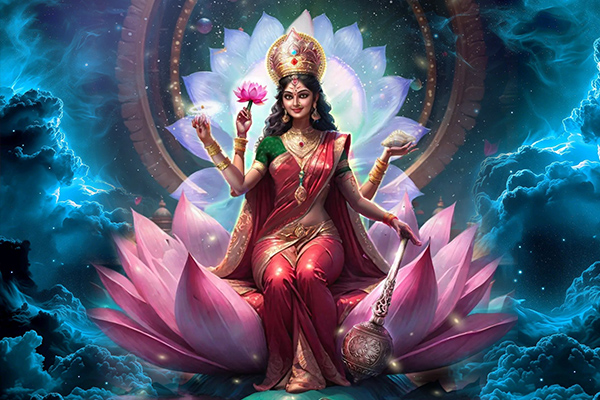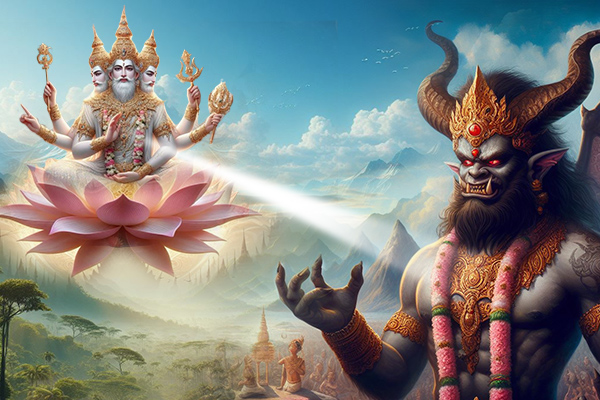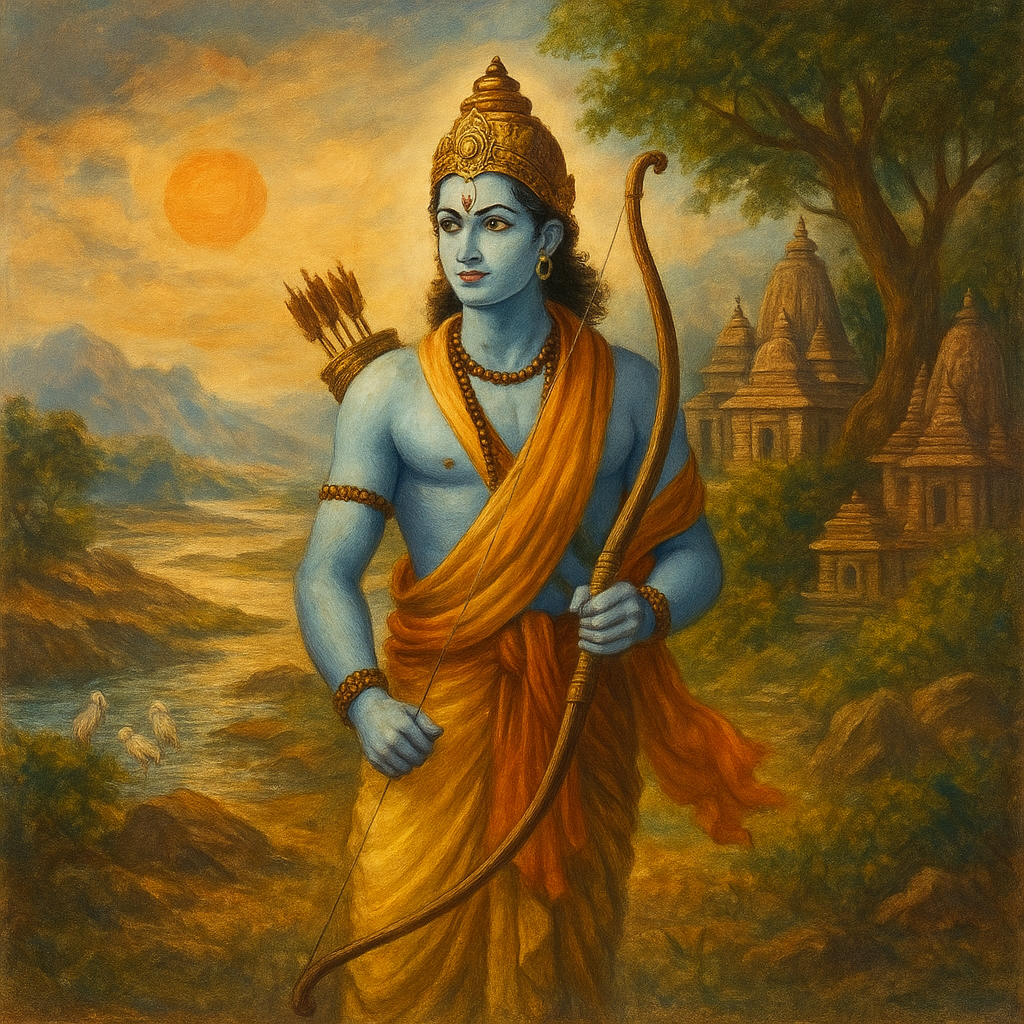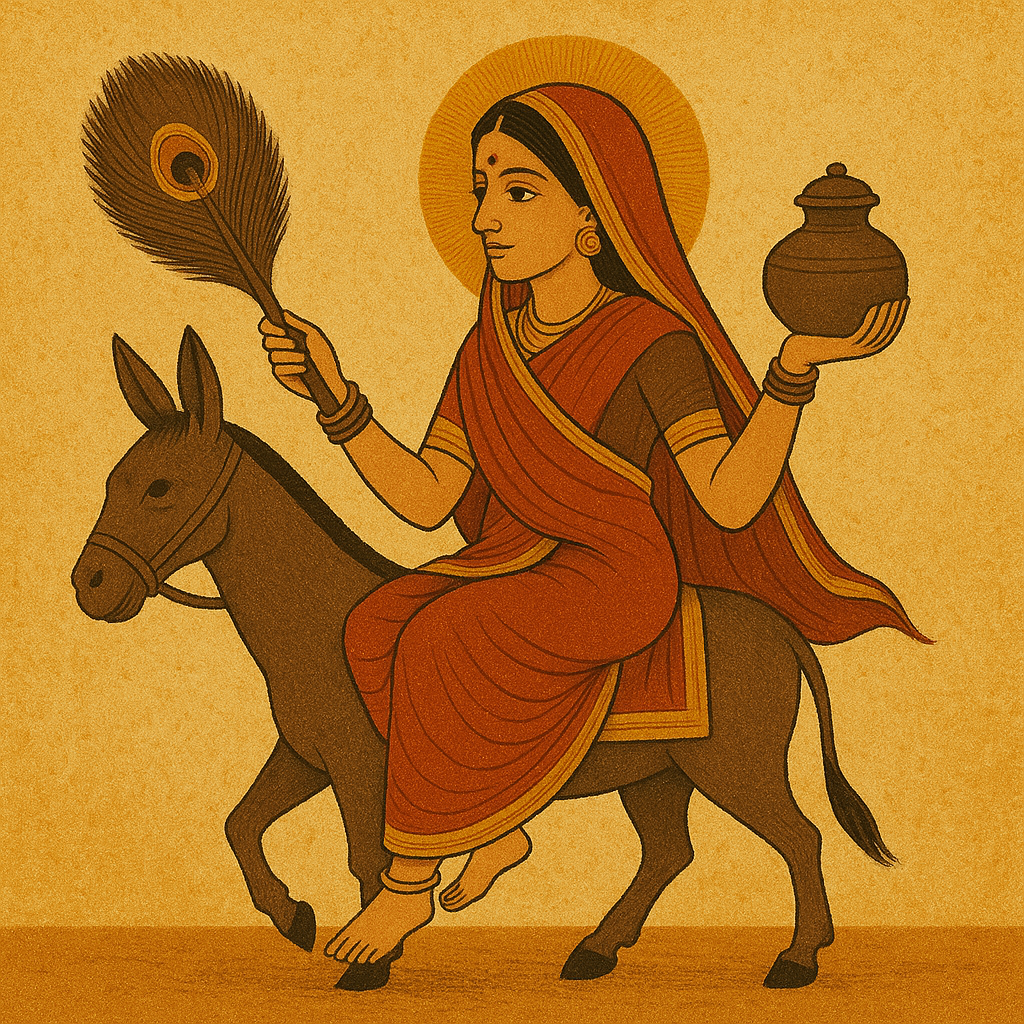---main-image.jpg)
Maha Navami, also known as Durga Navami, is the ninth day of Navratri and a celebration of the divine power of Goddess Durga. Falling on October 19, 2026, this auspicious day marks the culmination of Maa Durga’s fierce battle with the demon Mahishasura and symbolizes the eternal triumph of good over evil. Devotees observe Maha Navami puja vidhi, chant sacred Maha Navami mantras, keep Maha Navami vrat, and perform rituals like Kanya Pujan, Sandhi Puja, and Astra Pujan. With deep spiritual importance, Durga Navami 2026 paves the way for the grand celebration of Vijayadashami (Dussehra).
Maha Navami 2026: Date, Tithi, Time & Muhurat
Maha Navami is observed on the Navami Tithi (ninth lunar day) of Shukla Paksha in the Hindu month of Ashwin, usually falling in September or October. In 2026, devotees will celebrate this sacred day with great devotion and elaborate rituals.
Maha Navami on Monday, October 19, 2026
Ashwina Navratri Parana on Tuesday, October 20, 2026
Navami Tithi Begins - 06:21 AM on Oct 19, 2026
Navami Tithi Ends - 08:20 AM on Oct 20, 2026
Maha Navami Muhurat & Puja Time
The Maha Navami puja muhurat is considered highly auspicious for performing key rituals such as Sandhi Puja, Durga Havan, Kanya Pujan, and Astra Pujan. Devotees are encouraged to follow the exact Maha Navami time to seek Maa Durga’s blessings for strength, prosperity, and spiritual upliftment.
What is Maha Navami?

Maha Navami, also known as Durga Navami, is the ninth day of Navratri. It represents the last phase of Goddess Durga’s battle with the demon Mahishasura. On this day, she is worshipped in her fierce form, Mahishasuramardini, the slayer of Mahishasura.
Maha Navami Meaning & Importance
The Maha Navami meaning reflects the spiritual truth that no matter how powerful evil becomes, it is always defeated by righteousness. The Maha Navami importance also lies in worshipping Maa Siddhidatri, the ninth form of Goddess Durga, who bestows siddhis (divine powers), knowledge, and fulfilment upon her devotees.
Durga Navami Significance
The Durga Navami significance is deeply rooted in the celebration of feminine power and divinity. Mahishasura was defeated by a woman, highlighting the strength of womanhood. Devotees perform Sandhi Puja, Kanya Puja, Astra Pujan, and Durga Havan to honour Maa Durga.
Durga Navami 2026 also marks the final day of Navratri fasting and prayers before Vijayadashami (Dussehra), reinforcing the eternal victory of good over evil.
Goddess Siddhidatri – The Devi of Maha Navami

On Maha Navami (Durga Navami) 2026, devotees worship Maa Siddhidatri, the ninth incarnation of Goddess Durga. The word Siddhi means supernatural powers or spiritual abilities, and Dhatri means giver- hence she is revered as the bestower of siddhis.
Maa Siddhidatri is often depicted seated on a lotus, riding a lion as her vahana. She has four arms, holding a lotus, mace, conch shell, and discus. Worshipping her on Maha Navami is believed to bless devotees with wisdom, fulfillment, and prosperity.
According to legend, Lord Shiva attained all siddhis through the grace of Goddess Siddhidatri. This is why she is considered the ultimate source of spiritual power and divine energy.
By worshipping Maa Siddhidatri on Maha Navami, devotees not only conclude their Navratri vrat but also invoke her blessings for protection, strength, and spiritual growth.
Rituals of Maha Navami

The rituals of Maha Navami are deeply spiritual and mark the culmination of the Navratri festival. Devotees dedicate the day to prayers, fasting, and sacred ceremonies that invoke the blessings of Goddess Durga in her form as Maa Siddhidatri.
Maha Navami Puja Vidhi Step by Step
- Begin the day with a holy bath and wear clean clothes.
- Place an idol or image of Goddess Durga in your puja space.
- Perform Sandhi Puja, which is observed at the juncture of Ashtami and Navami Tithi. This special ritual includes offering 108 lotuses and lighting 108 lamps to mark the transition between the two auspicious days. The 48-minute Sandhi Puja occurs during the last 24 minutes of Ashtami and the first 24 minutes of Navami.
- Offer flowers, fruits, incense, and chant sacred Maha Navami mantra with devotion.
- Perform Durga Homa (Havan) during Aparahna Kaal (afternoon), where ghee, sandalwood, and other havan samagri are offered into the fire.
How to Do Maha Navami Puja at Home
- Arrange a clean and peaceful puja altar with Goddess Durga’s idol or picture.
- Prepare offerings such as halwa, puri, and kala chana.
- Perform Kanya Pujan by inviting nine young girls (under the age of 11) and one boy (Batuk Bhairav).
- Wash their feet, apply tilak, tie a raksha sutra (kalawa) on their wrists, and serve them traditional sattvic food.
- Offer gifts like bangles, notebooks, clothes, or money as a mark of respect and gratitude.
What to Do on Maha Navami & Durga Navami

- Observe Maha Navami vrat by abstaining from grains and consuming only vrat foods like fruits, milk, and sabudana preparations. Some devotees keep a water-only fast.
- Perform Astra Pujan, where tools, weapons, and instruments are worshipped as symbols of power and protection. Traditionally, this was observed by warriors, but today it extends to all kinds of crafts and professions.
- Visit temples and Durga pandals, participate in community pujas, and honor the divine feminine through rituals and prayers.
Maha Navami Mantra, Vrat & Fasting Rules
On Maha Navami (Durga Navami) 2026, devotees observe strict fasting, recite sacred mantras, and follow traditional vrat rituals to seek Maa Durga’s blessings for health, protection, and prosperity.
Maha Navami Vrat & Vrat Katha
The Maha Navami vrat is an important part of Navratri. Many devotees observe it with deep devotion, believing it purifies the mind and soul. The Maha Navami vrat katha narrates how Goddess Durga fought the demon Mahishasura for nine days and nights before finally defeating him. By observing this vrat, devotees align themselves with the energy of victory, courage, and divine grace.
Maha Navami Fasting & Fasting Rules
- Devotees avoid grains and heavy foods.
- Some follow a strict nirjala vrat (only water), while others include milk, fruits, sabudana, or kuttu preparations in their diet.
- The fast is broken only after performing Maha Navami puja vidhi and offering prasad to Goddess Durga.
- Traditional food offerings include halwa, puri, and kala chana prepared in a sattvic style (without onion and garlic).
Maha Navami Vrat Vidhi
- Begin the vrat with Sankalp (pledge of devotion) in front of Goddess Durga.
- Perform daily aarti and offer flowers, incense, fruits, and sweets.
- Conduct Durga Homa or Kanya Pujan to conclude the vrat.
- Break the fast only after puja, by consuming prasad offered to the Goddess.
Observing Maha Navami vrat with sincerity is believed to bring spiritual strength, prosperity, and divine blessings from Maa Durga.
How to Celebrate Maha Navami

The celebration of Maha Navami (Durga Navami) 2026 varies across India, with each region adding its own traditions, rituals, and cultural expressions. It is a day to honour Goddess Durga, celebrate feminine strength, and participate in rituals that mark the conclusion of Navratri.
Traditions Followed in Different Regions
South India: Devotees perform Astra or Ayudha Puja, worshipping tools, vehicles, musical instruments, and machinery. This ritual symbolizes respect for knowledge, work, and divine energy. Children in some places also begin their schooling on this day.
North & East India: Kanya Puja (Kumari Puja or Kanak Puja) is performed, where young girls are worshipped as manifestations of Goddess Durga. They are offered poori, kala chana, and halwa, along with gifts and blessings.
West Bengal & Eastern India: Maha Navami is observed as the third day of Durga Puja. Grand pandals are set up with idols of Durga as Mahishasuramardini. Devotees visit pandals, perform Navami Homa, and celebrate with cultural programs and feasting.
Andhra Pradesh: The Bathukamma festival is celebrated, where women arrange flowers in a conical seven-layered form and offer them to Goddess Gauri. It highlights the glory of womanhood.
Mysore (Karnataka): The royal sword is worshipped, and a magnificent procession with decorated elephants and camels is carried out, reflecting centuries-old traditions.
Modern Ways to Celebrate Maha Navami
In today’s times, devotees celebrate Maha Navami 2026 in both traditional and modern ways:
- Booking online pujas like Durga Puja, Kanya Pujan, and Goddess Siddhidatri Puja.
- Offering sacred items such as 9 Mukhi Rudraksha and Gomed stone to invoke divine blessings.
- Participating in virtual pandal darshan and live-streamed rituals when unable to attend physically.
- Engaging in community seva (service) activities like distributing food, clothes, or gifts to the underprivileged, in the spirit of Goddess Durga’s compassion.
Maha Navami Story

The Maha Navami story is rooted in the epic battle between Goddess Durga and the demon king Mahishasura. Mahishasura, through intense penance, received a boon from Lord Brahma that no man or God could kill him. Believing no woman could ever harm him, he unleashed terror across the three worlds and even conquered Indra’s celestial kingdom.
Helpless, the gods turned to Lord Shiva, Vishnu, and Brahma for help. From their combined divine energies, Goddess Durga was created- resplendent with ten arms, adorned with gold ornaments, and carrying celestial weapons given by the gods. Mounted on a lion, she embodied both grace and unmatched strength.
Mahishasura, who could transform between human and buffalo forms, fought fiercely against Goddess Durga. Their battle lasted nine long days, during which the goddess displayed immense valour. On the tenth day (Vijayadashami), Durga finally pierced Mahishasura’s heart with her trident, ending his reign of terror and restoring cosmic balance.
Thus, Maha Navami 2026 marks the penultimate and decisive stage of this cosmic war. It reminds devotees of Durga’s courage, divine power, and the eternal truth that good always triumphs over evil.
Maha Navami Durga Puja & Havan

On the morning of Maha Navami (Durga Navami) 2026, devotees begin with a holy bath and set up the idol or image of Goddess Durga in their puja space. After offering flowers, incense, fruits, and chanting mantras, the day continues with the important ritual of Durga Homa (Havan).
The Havan is most effective when performed during Aparahna Kaal (afternoon).
A Havan Kund (sacred fire altar) is prepared and lit.
Offerings of ghee, sandalwood, grains, and havan samagri are made into the fire while chanting Vedic mantras.
This fire ritual is believed to purify the environment, remove negative energies, and invoke the goddess’s blessings of protection, health, and prosperity.
Performing the Durga Havan on Maha Navami signifies the completion of nine days of devotion and prepares devotees for the celebration of Vijayadashami the following day.
Kanya Pujan on Maha Navami

Kanya Pujan is one of the most important and widely observed rituals on Maha Navami. It is performed to honor young girls as manifestations of Divine Mother Durga herself.
- Traditionally, nine girls (representing Nav Durga) and one young boy (Batuk Bhairav, protector of Shaktipeethas) are invited.
- Their feet are washed as a mark of respect.
- A tilak is applied on their foreheads and a raksha sutra (kalawa) tied on their wrists.
- They are offered traditional sattvic food: halwa, puri, and kala chana prepared without onion or garlic.
- Gifts such as bangles, notebooks, pens, clothes, or money are given.
- Devotees bow to them and touch their feet, seeking blessings of the Divine Feminine.
- Finally, aarti is performed for the girls while chanting Durga Aarti mantras.
Kanya Pujan reflects the Durga Navami significance of celebrating womanhood and divine feminine power. It is believed that worshipping girls on this day brings prosperity, happiness, and blessings equivalent to worshipping Goddess Durga herself.
Astra Pujan on Maha Navami

Another important ritual on Maha Navami (Durga Navami) 2026 is Astra Pujan, the ceremonial worship of weapons and tools. This practice reflects gratitude, respect, and reverence for the divine energy believed to reside in instruments of power and livelihood.
In ancient times, warriors such as Shri Ram and the Pandavas performed Astra Pujan to seek Goddess Durga’s blessings before going into battle. They prayed for victory, protection, and strength through the sanctification of their weapons.
Today, Astra Pujan has evolved to include the worship of tools and instruments used in various professions- ranging from books, musical instruments, and machinery to automobiles. It symbolizes respect for one’s trade and work, acknowledging that every tool carries sacred energy when used with devotion and purpose.
By performing Astra Pujan on Maha Navami, devotees invoke blessings of success, prosperity, and divine protection in their personal and professional lives.
Goddess Siddhidatri Puja on Maha Navami
On Maha Navami (Durga Navami) 2026, devotees perform the Goddess Siddhidatri Puja, which marks the conclusion of Navratri celebrations. Worshipping Maa Siddhidatri, the ninth form of Durga, is believed to bestow knowledge, success, spiritual fulfillment, and siddhis upon her devotees. The name Siddhidatri itself means the giver of supernatural powers (siddhis).
During this puja, devotees offer flowers, incense, fruits, and sattvic food to the Goddess while chanting mantras and prayers. She is especially worshipped for blessings of health, prosperity, protection, and divine energy. It is also believed that worshipping Maa Siddhidatri on Maha Navami brings a sense of peace, fulfillment, and harmony into one’s life.
Click on the link to buy Siddhidatri Puja from Rudra Centre and receive divine blessings on this auspicious day.
Book Goddess Siddhidhatri Puja
Maha Navami Festival Associated Products & Services
Along with pujas and rituals, devotees also bring sacred items and services into their celebrations of Maha Navami (Durga Navami) 2026 to strengthen their spiritual connection with Goddess Durga.
Kanya Pujan

Kanya Pujan is observed on the eighth or ninth day of Navratri, known as Ashtami or Navami, and it involves the worship of young girls as divine forms of Goddess Durga. Performing this ritual is believed to invoke the blessings of Maa Durga for prosperity, protection, and well-being. Book Kanya Pujan on the auspicious day of Maha Navami through Rudra Centre.
Durga Puja

Powerful Durga Pujas are performed by our team of qualified pandits with complete Vedic rituals to honor the Divine Mother. Devotees seek blessings for protection, courage, prosperity, good health, wisdom, spiritual growth, and relief from negative planetary influences. Book Durga Puja with Rudra Centre on Maha Navami to receive these divine blessings.
9 Mukhi Rudraksha

The 9 Mukhi Rudraksha is ruled by Goddess Durga and carries the combined energy of the Nava Durga (nine forms of the Goddess). It grants worldly comforts, fulfills desires (bhogha), and offers liberation (moksha) to the wearer. Buy a 9 Mukhi Rudraksha from Rudra Centre to receive the divine power of Maa Durga on Maha Navami.
Gomed Stone

The Gomed (Hessonite) stone has been revered for over 5,000 years for its radiant brown-reddish glow. It is a gemstone of power, fame, political and social success, financial strength, and protection from hidden enemies. It is also believed to dispel unseen negative energies from the environment. Buy a Gomed Stone from Rudra Centre on this holy day to harness its protective and prosperous energy.





Comments 0
Leave your thought here